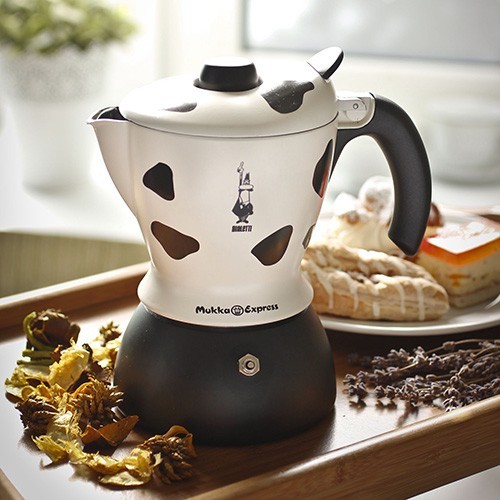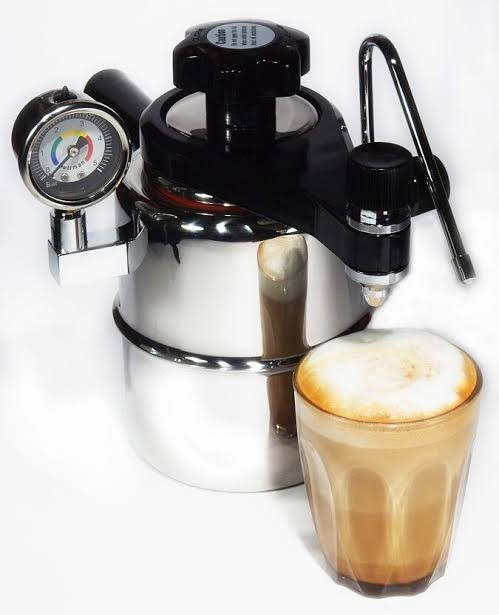Coffee compromise?

Coffee compromise??? Not on my watch
Coffee for Ross is almost a religious experience and he can never spend too much time on coffee preparation.
If you’d prefer not to spend any time or thought on coffee then this article is not for you, so grab yourself a Nescafe or International Roast and move off to another more interesting article and leave the wonder of coffee to the connoisseurs.
Now that those neanderthals are gone, let get down to business … coffee business.
Should it be difficult to have good coffee when camping?, do we really have to compromise or sacrifice coffee quality for location? The answer is no, of course we don’t. But at what cost and at what inconvenience are you prepared to go to in order to produce a decent coffee. We all have to wait in line whilst the barista prepares our cafe bought, so sacrificing a little time for ourselves in camp shouldn’t be too much of an inconvenience.
Coffee pod machines can produce a very good coffee but Ross prefers a freshly ground coffee, and we refuse to have to lug out the generator to get a coffee fix. The amount of coffee Ross drinks he’d have arms like Popeye if the generator was a part of each coffee.
So, good coffee off the grid? Big ask? Possibly, especially when it’s difficult enough to find a consistently good coffee when you live in the burbs and are literally surrounded by a local landscape flooded with coffee shops, often next door to each other. At home we have 4 cafes within a 50 mtr strip. Add into that the caravanning element of constantly changing locations, and it all adds up to making the simple search for a decent coffee very unpredictable and depressing, and a very expensive experiment over time.
We stopped in at the Kings Creek Station enroute to Kings Canyon and we wandered into the cafe where Ross ordered his standard poison, a flat white and young back packer served up a train wreck loaded onto a base of UHT all for a cool $7.50. Wow, if this is what it’s come it’s time to start drinking tea.
Producing good fresh ground coffee yourself in the wilds of freecamping need not be an unachievable challenge, nor does it need a generator as part of its production.
While we’re on the topic of UHT we don’t appreciate the very unlike milk taste of it and it taints whatever its put into, particularly coffee. With all the long term remote travelling we’ve done we’ve never used anything other than fresh milk. When we started long term travelling we carried 3 x litres of just in case UHT, along with a small container of powdered milk. We’ve never opened the powdered milk, 2 of the UHT’s expired and the third started to leak from corrugations.
The unsung heros of the off grid caravanning world have been quietly making huge sacrifices when it comes to their morning brew, and dare I say resorting to instant coffee much more than we would care to admit. Yes, I know its a first world problem but that doesn’t diminish the frustration.
On offer there is a huge collection of coffee making, brewing, extracting, podding and filtering devices and systems for producing coffee, and many of those produce incredibly good coffee but most aren’t appropriate for my camping.
One of the more common and popular coffee making methods is the pod machine. Pod machine can produce great consistent coffee time after time, but it requires 240v.
Barb isn’t a big coffee drinker and only has one morning brew. I on the other hand will have 5 coffees before the sun comes up and then a few more just after, so our brew method had to be simple and single serve. We wanted to avoid anything that required 240v because lugging out the generator for a coffee would make the process unbearable particularly for morning tea and lunch stops on the roadside. I like a brew so it needs to be easy enough to quickly have on in a roadside rest stop or parkland whilst we’re having our morning tea or lunch.
Barb is from Italian heritage and Italy is where the stove top Moka pot was invented almost 100 years ago by Alfonso Bialetti. Like every Italian household we have a number of Moka pots. After successfully conquering the world of coffee Bialetti branched into other more boutique brewers, mostly all stove top units.
Bialetti’s Mukka Express model is incredibly simple by design based loosely on the original Bialetti Moka Express, simple to setup, operate, and clean. In a single process it produces a flat white and the only steps required are fill it with water, milk, ground coffee and add a heat source.

The Mukkas simpleness is challenged by the precision required in regards to its ingredients, and I’d be less then compete if I failed to mention that. Bialetti stopped making the Mukka many years ago apparently due to machinery issues, and never bothered to rectify that. Because of that new Mukkas are becoming increasingly difficult to find. If you can find one they will be typically around the $150 mark, although they do pop on second hand.
The Mukka reviews are mixed and it has a reputation of producing bitter coffee which is maybe why Bialetti has resigned it to history. Im sure the reviews are skewed the The reviews are skewed The Mukka will produce a great coffee but only when care is taken in the prep.
The Mukka like all stove top brewers requires ground coffee which tick our first box. Like all stove top brewers the Mukka does not produce a true espresso and there lies our first hurdle, you cant use pre-packaged Supermarket espresso ground coffee in it. All prepackaged ground supermarket coffee is fine ground for espresso machines and that tends to produce bitter coffee in stove top brewers, accentuated in the Mukka.
Espresso ground coffee in the Mukka will be over extracted and bitter. We need a coarser grind to limit the water contact, so we therefor need coffee which is precisely ground courser than an espresso grind.
Your possibly picking up on the potential for frustration here, but with the right set up, the Mukka produces a consistently great fresh ground coffee.
Fresh ground beans make for a better flavoured coffee, and in the case of the Mukka the grind needs to be precise so unfortunately a cheap blade “grinder” option is no good, it needs to not only be a proper stabilised burr grinder.
I resisted the burr grinder and willed the blade grinder to do the job, but continued perseverance just produced inconsistently horrible to sub average coffee. Eventually I relented and feeling like a was throwing good money after bad I bit the bullet purchased a stabilised burr grinder.
After some experimentation to get the grind right, the burr grinder provides the control and consistency I was missing to replicate the perfect grind coarseness every single time
I started out using boutique coffee blends, but now Ive adjusted the process subtly to take advantage of the common supermarket varieties for example Lavazza or Vittoria beans, because we can easily source a consistent coffee bean on the road as easily as adding it to our usual supermarket grocery list.
Once the components have been mastered, the coffee making process is very simple and easy. Grinding beans fresh makes a better coffee although I do from time to time grind a couple of days worth. Our small cordless grinder has proved itself and is perfect for camping. Its a small cordless unit perfect for 1 or 2 coffees which charges from a 12v phone charger. All in all the process to make a freshly ground Mukka flat white coffee worthy of any trendy cafe is quick, simple and above all consistent.
We also have a Bellman CX25P stove top coffee machine which is a little more hands on than the Mukka, but it will almost pump out cafe quantities of coffee. It has adjustable outputs of up to 9 coffees per process. The Bellman coffee is very pleasant but not quite as strong as we would prefer, but the milk stretching (steaming) is first class. The Bellman can use almost any grind coarseness, which as we’ve discussed earlier will have an effect of coffee strength and taste.
Very fine espresso ground coffee will require a paper filter over the coffee to stop it making an appearance in the cup. Filters are available as an 3rd party accessory but we successfully use toilet paper with perfect results.
The Bellman CX25P has a pressure gauge, and is in all other aspects the same as the model CX25. The pressure gauge allows for the creation of a more uniform output for each brew.
From the instructions, in essence when the gauge reads 1.2 bar pull the shot of coffee, then once the gauge reads 2 bar start stretching the milk. Its pretty much that simple. The Bellman for us produced a very nice, although a little weak, coffee straight out of the box with one read of the instruction manual.
